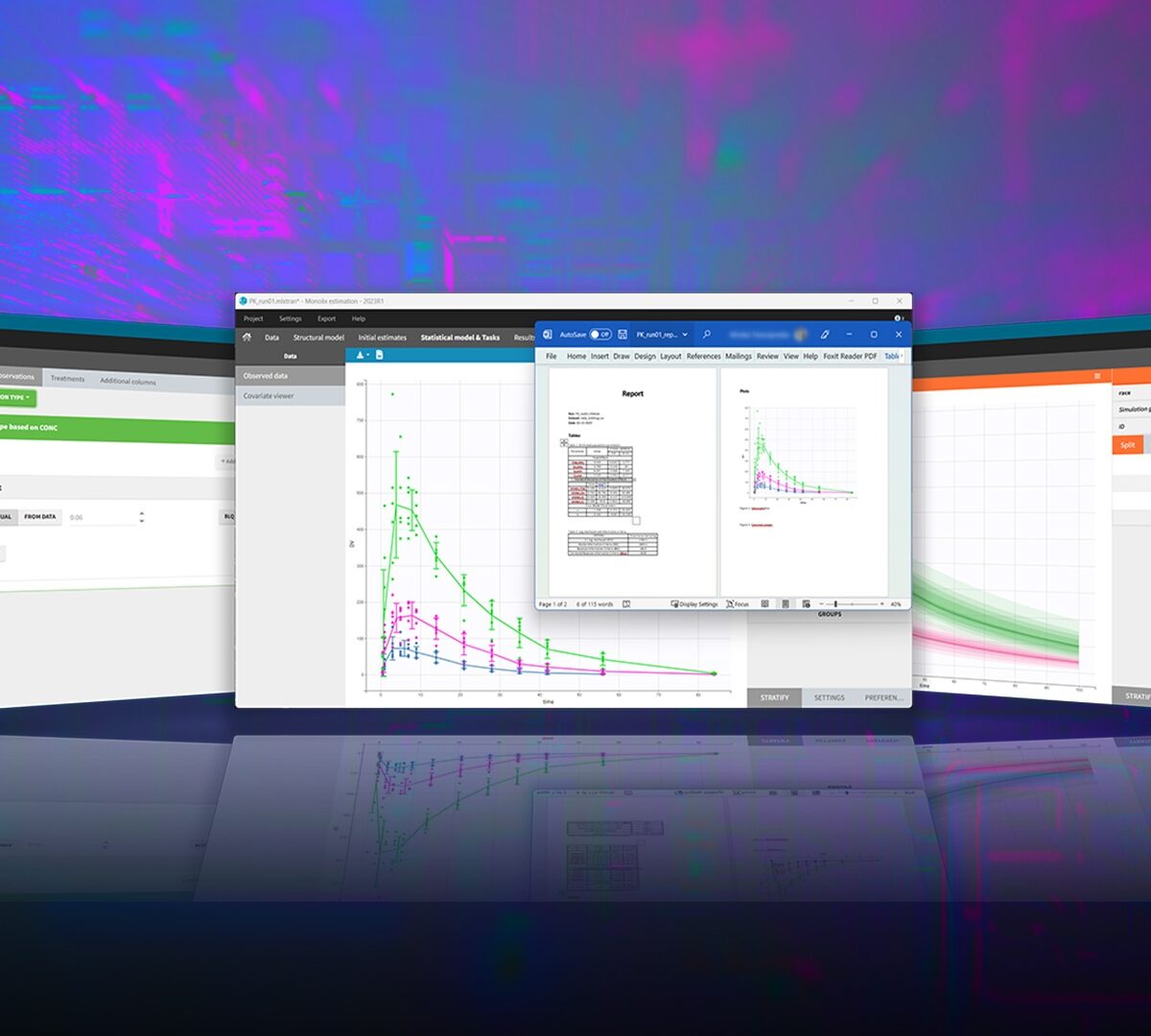The fitted parameters include PK properties, first orderabsorption rate, bioavailability and absorption lag time.

Simulations Plus and the University of Southern California Secure NIH Grant to Develop New AI Drug Discovery Offerings
Partnership will advance the field of ligand-based virtual screening to improve drug design and optimization activities

The Case for PK Simulations in Early Drug Discovery
You’re the head of medicinal chemistry. Your focus is on developing molecules that balance (often conflicting) objectives to achieve the target compound profile, and it consumes every spare minute.

RENAsym Flyer
RENAsym Predict and Prevent Drug-Induced Kidney Injury

PBBM Considerations for Base Models, Model Validation, and Application Steps: Workshop Summary Report
The proceedings from the 30th August 2023 (Day 2) of the workshop “Physiologically Based Biopharmaceutics Models (PBBM) Best Practices for Drug Product Quality: Regulatory and Industry Perspectives” are provided herein.

Preparation and Evaluation of Nanolipid Carriers of Bedaquiline- In vitro Evaluation and in silico Prediction
Bedaquiline, a potent antitubercular drug used in the treatment of multidrug-resistant strains, suffers from low oral bioavailability, a slow onset of therapeutic action, and side effects.

Synthesis, Absolute Configuration, Biological Profile and Antiproliferative Activity of New 3,5-Disubstituted Hydantoins
Hydantoins, a class of five-membered heterocyclic compounds, exhibit diverse biological activities.

Leveraging PBPK/PBBM in Support of BCS Class 3 Biowaivers
It is critical to understand the perspectives and key criteria of global regulatory agencies in the consideration of biowaivers, but many companies have knowledge gaps that hinder their success.

Advancing the Harmonization of Biopredictive Methodologies through the Product Quality Research Institute (PQRI) Consortium: Biopredictive Dissolution of Dipyridamole Tablets
Biorelevant dissolution and its concept have been widely accepted and further developed to meaningfully predict the bioperformance of oral drug products.

Getting Started with GPX™: A Step-by-Step Guide
With a new interface, updated workflows, and advanced features, it may be challenging to know how to get started with GastroPlus(R) X.

Systematic Evaluation of Underlying Models That Improve Purely In-Silico High-Throughput Mechanistic Pbpk Predictions Across Species
The ability to quickly and accurately predict key PK properties based solely on chemical structure can aid in several tasks.

Effect of Data Quality and Data Quantity on the Estimation of Intrinsic Solubility: Analysis Based on a Single-Source Data Set
Aqueous solubility is one of the most important physicochemical properties of drug molecules and a major driving force for oral drug absorption.

Phase I Clinical Trial of NH130 and the Prediction of its Pharmacokinetics Using Physiologically Based Pharmacokinetic Modeling
Parkinson’s disease psychosis (PDP) is a common and distressing complication of Parkinson’s disease (PD), characterized by hallucinations and delusions.

MonolixSuite™ v2024 Product Brochure
A fast easy-to-use and powerful suite of applications for pharmacometrics analysis, modeling and simulation.

New ICH M13A Guideline: Extra Bioequivalence Study Needed for pH-Dependent Drugs with Proton Pump Inhibitors
New guidance was recently released by the International Council for Harmonisation (ICH) regarding bioequivalence for immediate release solid oral dosage forms.

In Silico Dose Adjustment of Zolpidem in Females Using Physiologically Based Pharmacokinetic Modeling and Simulations
Zolpidem (ZPD) is a non-benzodiazepine sedative indicated for the treatment of insomnia.

AI for Pharmacological Modeling
Pharmacological modeling plays a key role in drug development by guiding decisions on dosing to optimize safety and efficacy and ultimately streamlining the path to successful therapeutic interventions.

CFD-PK model for nasal suspension sprays: Validation with human adult in vivo data for triamcinolone acetonide
The objectives of this study were to expand and implement a Computational Fluid Dynamics (CFD)-Dissolution, Absorption and Clearance (DAC)-Pharmacokinetics (PK) multi-physics modeling framework for simulating the transport of suspension-based nasal corticosteroid sprays.

Application of Virtual Drug Study to New Drug Research and Development: Challenges and Opportunity
In recent years, virtual drug study, as an emerging research strategy, has become increasingly important in guiding and promoting new drug research and development.

PBPK Modeling of Lamotrigine and Efavirenz during Pregnancy: Implications for Personalized Dosing and Drug-Drug Interaction Management
This study aimed to model the pharmacokinetics of lamotrigine (LTG) and efavirenz (EFV) in pregnant women using physiologically based pharmacokinetic (PBPK) and pregnancy-specific PBPK (p-PBPK) models.

